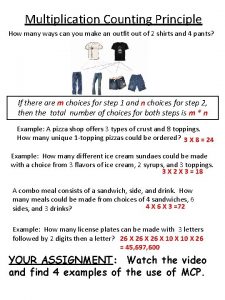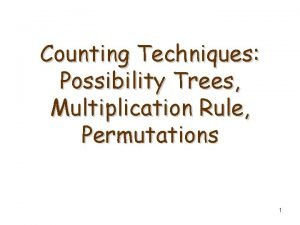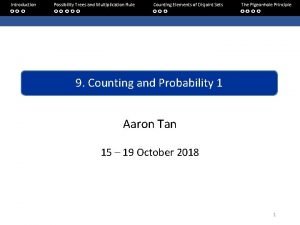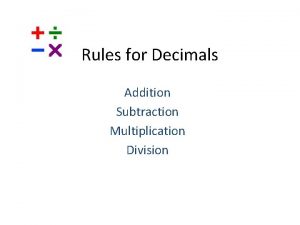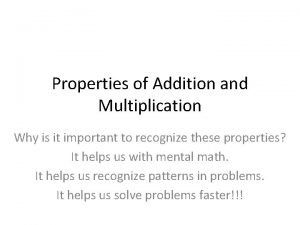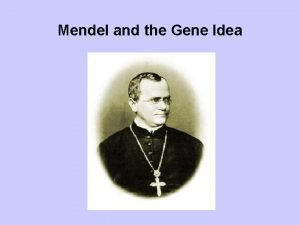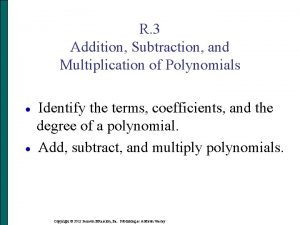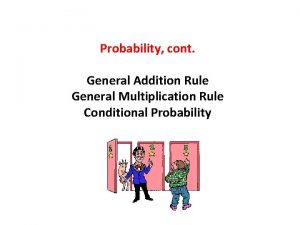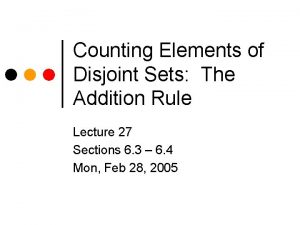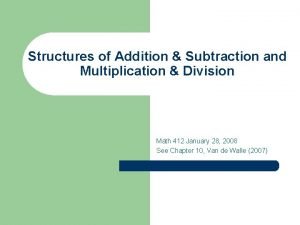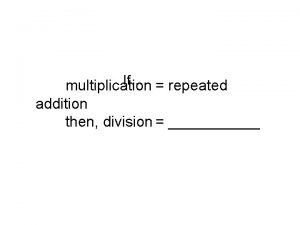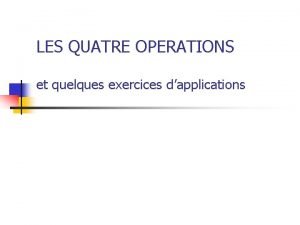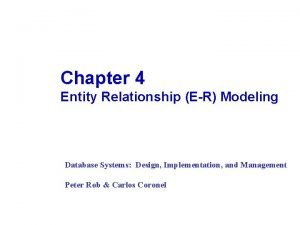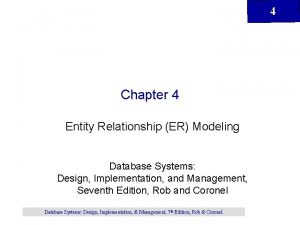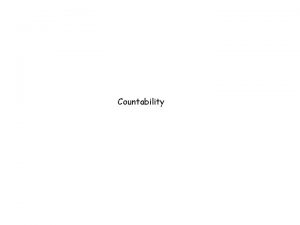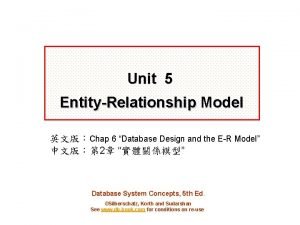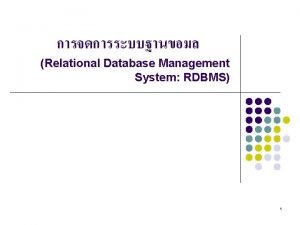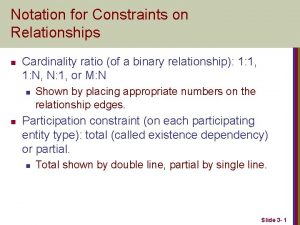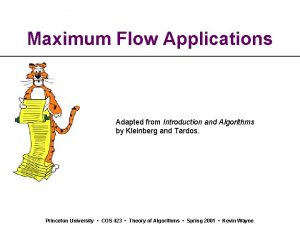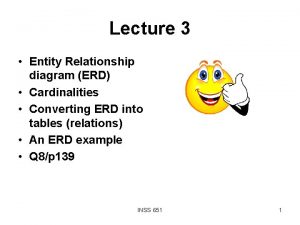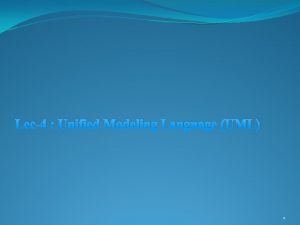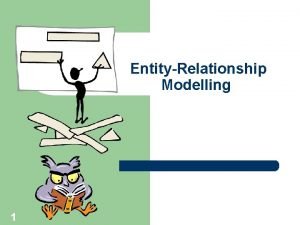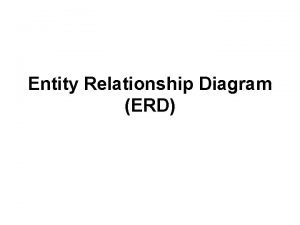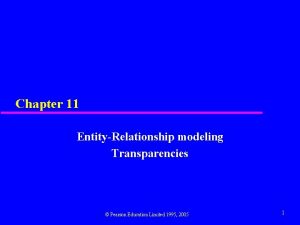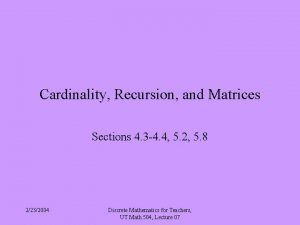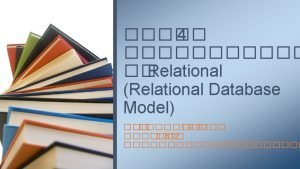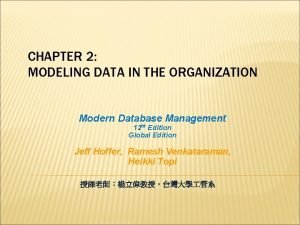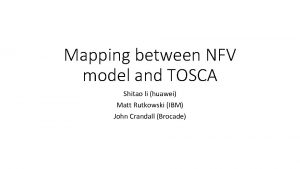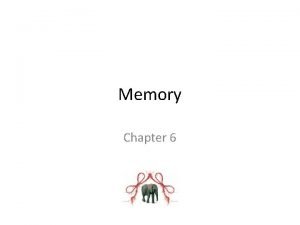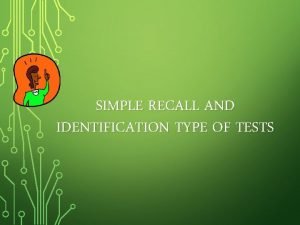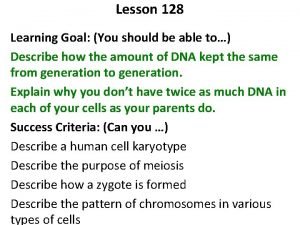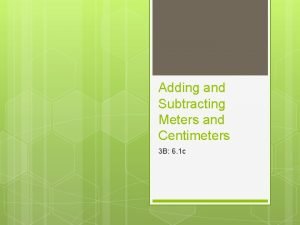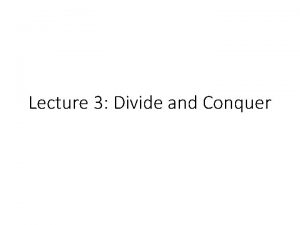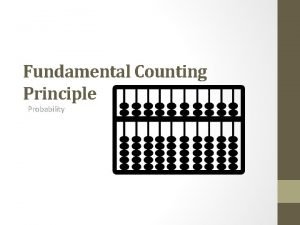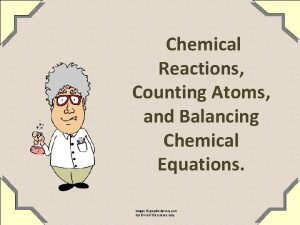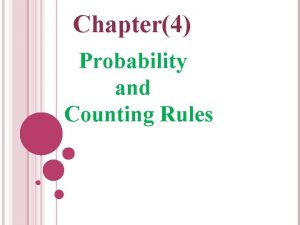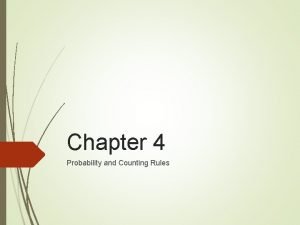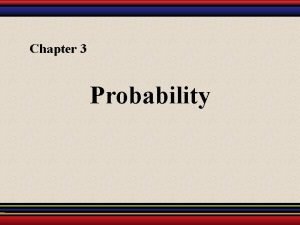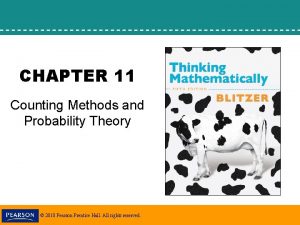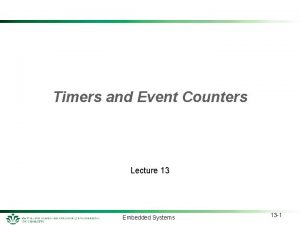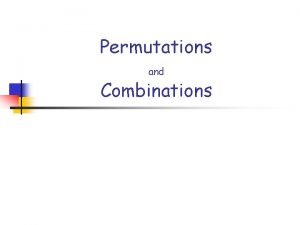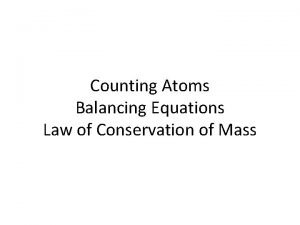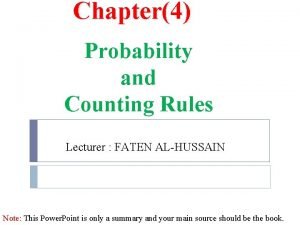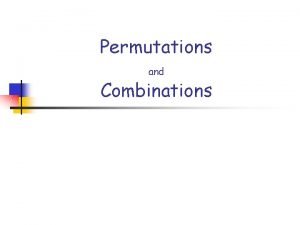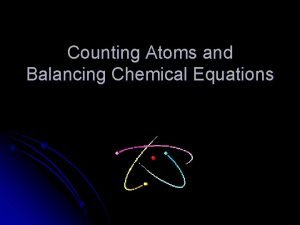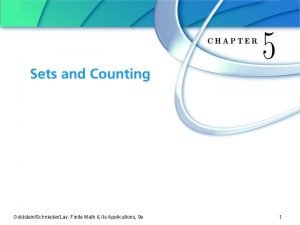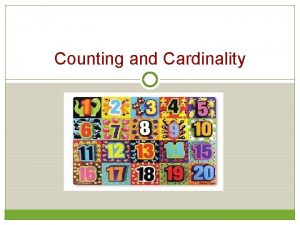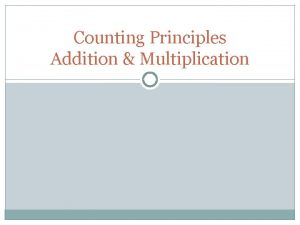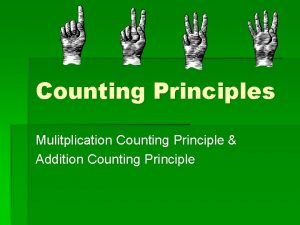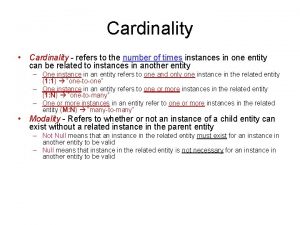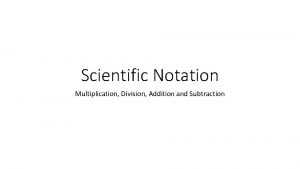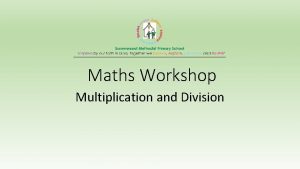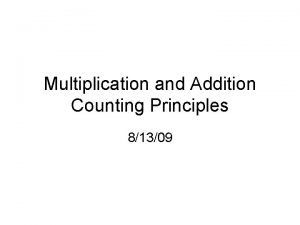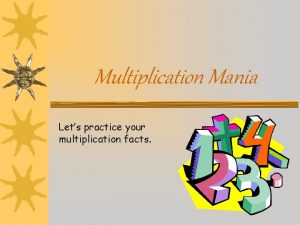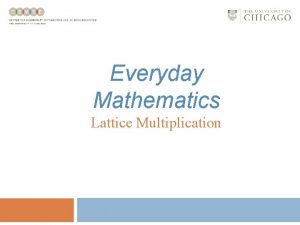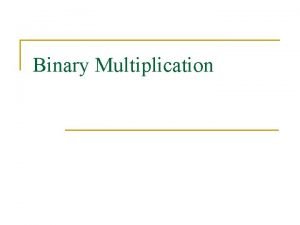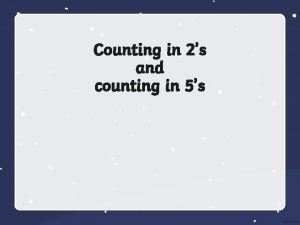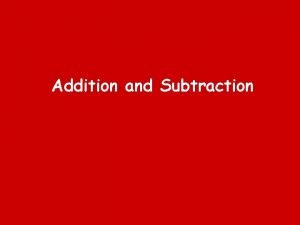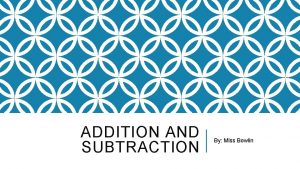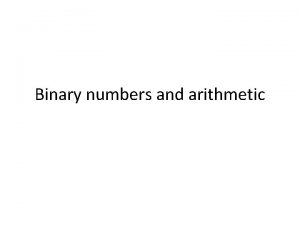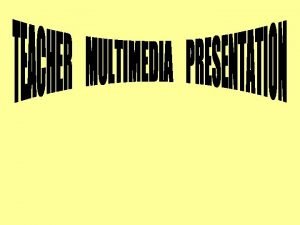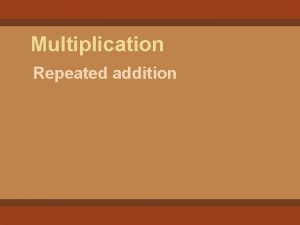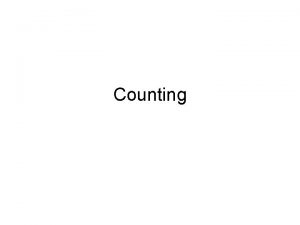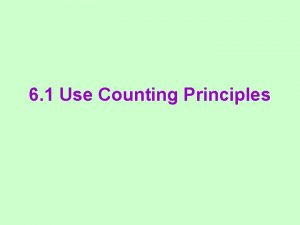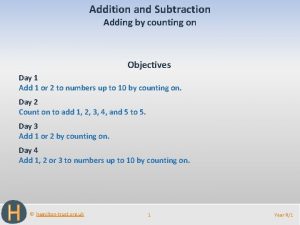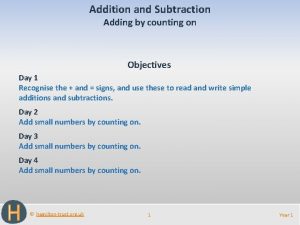Counting 101 addition and multiplication Recall Cardinality Adding



























































- Slides: 59

Counting 101 addition and multiplication

(Recall) Cardinality Adding!

(Recall) Cardinality Adding!

(Recall) Cardinality Adding!

(Recall) Cardinality Adding!

(Recall) Cardinality Adding!

(Recall) Cardinality Adding!

Disjoint Unions. . . it means they are different (that is they have an empty intersection)

Sum of Disjoint Unions (The Addition Rule)

The addition rule. . . Example: Rob’s Restaurant on 5 -points, has 3 chicken dishes, 4 steak dishes, and 3 fish dishes. How many dishes does Rob’s Restaurant have?

The addition rule. . . 3 4 =10 3

(Recall) Cross Products!

(Recall) Cross Products! we can do this any number of times

(Recall) Cross Products! we can do this any number of times

The multiplication rule…(cross products) Example: At Rob’s Restaurant, we have the choice of 3 appetizers, 10 main dishes, and 2 desserts. How many different meals (an appetizer, a main dish, and a dessert) can you get?

The multiplication rule…(cross products)

The multiplication rule…(cross products) So what set would represent a meal? for example one meal is: (Cheese Sticks, Fried Chicken, Cheese Cake)

The multiplication rule…(cross products)

The multiplication rule… (trains) My Trains =

The multiplication rule… (trains) Possible Trains: Is this a cross product?

The multiplication rule… (trains) …

The multiplication rule… (trains) How could we count this? 1 st Choice 2 nd Choice 3 rd Choice 4 th Choice

The multiplication rule… (trains) 1 st 2 nd 3 rd 4 th 4 x 3 x 2 x 1 = 24

The multiplication rule…(general) In general the multiplication rule is: What does this mean? if we have: then there are

The multiplication rule. . .

The multiplication rule… Breaks? WE COULD MAKE THE MISTAKE: 4 choices 3 choices 2 choices 1 choice (4) x (3) x (2) x (1) =24

The multiplication rule… Breaks? are these DISTINCT? 1 st Choice 2 nd Choice 3 rd Choice 4 th Choice

The multiplication rule… fixed! How could we count this? K’s Choice R’s Choice E’s Choice

The multiplication rule… fixed! K’s Choice 4 R’s Choice x 3 How could we count this? E’s Choice x 1 = 12

Group Work:

Counting 201 permutations and combinations

Permutations… (trains again) My Trains =

Permutations… (trains again) Possible Trains: (permutations of the train cars) 1 st 4! = 2 nd 3 rd 4 th 4 x 3 x 2 x 1 = 24

Factorial. . .

Permutations

Permutations

Permutations… (mo’ trains) My Trains = 7 train cars! (only 4 at a time)

Permutations… (mo’ trains) Possible Trains: (permutations of the 4 train cars) How could we count this?

Permutations… (mo’ trains) (first attempt) Multiplication Rule to the Rescue! 1 st 2 nd 3 rd 4 th 7 x 6 x 5 x 4 = 840

Permutations… (mo’ trains) (second attempt) Over Counting! (what if we were counting permutations of all 7? ) 7! = 5040 how many extra did we count?

Permutations… (mo’ trains) (second attempt) Over Counting! 3! = 6

Permutations… (mo’ trains) (second attempt) Over Counting! 7! 3! = 840

Permutations… (general trains) n Over Counting! . . . r . . . (n-r)

Permutations… (general) If we have n things that we want to take r things at a time n! (n-r)!

Permutations… (general)

Permutations… (general)

Combinations. . . To permute a list is to change the ORDER! In contrast a combination is just a sub collection of items with no order (a subset)

Combinations… Example: (how to play) You first choose 5 different numbers (the white balls) from 1 to 69. Then you pick the Powerball (the red ball) from 1 to 26. The order which you pick the numbers for the white balls is irrelevant. If your 5 numbers + 1 powerball number match the 5 numbers + 1 powerball drawn in the “official drawing” you win! If you wanted to buy tickets that cover every possible combination (guaranteeing a win), how many tickets would you need to buy?

Combinations… (We will count the white balls first) (over counting again!) What if we tried counting the permutations?

Combinations… (We will count the white balls first) (over counting again!) 12 9 9 22 11 47 12 47 22 11

Combinations… (We will count the white balls first) (over counting again!) (How many different ways could this happen? ) 12 9 22 11 5! = 120 47

Combinations… White Balls= 5! = 112385 Finish up with good old multiplication Rule! 112385 x 26 = 292201338 White Balls Power Ball

Combinations. . .

Combinations. . .

Group Work:

More Examples: See the Blackboard for work

More Examples: See the Blackboard for work

Group Work:

Group Work:
 Addition principle example
Addition principle example Multiplication counting principle
Multiplication counting principle Permutation multiplication rule
Permutation multiplication rule Possibility trees and the multiplication rule
Possibility trees and the multiplication rule Decimal division rule
Decimal division rule Inverse property of addition and multiplication
Inverse property of addition and multiplication Multiplication and addition rule genetics
Multiplication and addition rule genetics Addition subtraction and multiplication of polynomials
Addition subtraction and multiplication of polynomials Addition multiplication rule
Addition multiplication rule Matrix transpose times matrix
Matrix transpose times matrix Addition rule of counting
Addition rule of counting Multiplication doc.com
Multiplication doc.com If multiplication is repeated addition what is division
If multiplication is repeated addition what is division Arithmetic addition subtraction multiplication division
Arithmetic addition subtraction multiplication division Multiplication prioritaire
Multiplication prioritaire Cardinality and modality
Cardinality and modality Erd identifying relationship
Erd identifying relationship Cardinality and modality in database
Cardinality and modality in database Tiny college erd
Tiny college erd One to many relationship line
One to many relationship line Cardinality and countability
Cardinality and countability Cardinality and modality
Cardinality and modality Bank database er diagram
Bank database er diagram Cardinality vs multiplicity
Cardinality vs multiplicity Owl hierarchy
Owl hierarchy Er diagram min max notation
Er diagram min max notation In a minimum cardinality, minimums are generally stated as
In a minimum cardinality, minimums are generally stated as Airline scheduling max flow
Airline scheduling max flow Erd to table conversion
Erd to table conversion Why uml is called unified
Why uml is called unified Cardinality vs multiplicity
Cardinality vs multiplicity Simbol erd
Simbol erd Database cardinality
Database cardinality Cardinality vs multiplicity
Cardinality vs multiplicity Recursive definition of determinant
Recursive definition of determinant Contoh weak entity
Contoh weak entity Cardinality of irrational numbers
Cardinality of irrational numbers Degree cardinality
Degree cardinality Associative entity relationship example
Associative entity relationship example Tosca
Tosca Cardinality in cognos
Cardinality in cognos What is precision and recall in information retrieval
What is precision and recall in information retrieval Difference between recognition and recall
Difference between recognition and recall What type of test
What type of test What is active recall
What is active recall Subtracting meters calculator
Subtracting meters calculator Counting inversions divide and conquer
Counting inversions divide and conquer Counting techniques tree diagram
Counting techniques tree diagram Co2 + h2o c6h12o6 + o2
Co2 + h2o c6h12o6 + o2 Chapter 4 probability and counting rules answer key
Chapter 4 probability and counting rules answer key Counting rule probability
Counting rule probability Basic concepts of probability and counting
Basic concepts of probability and counting Chapter 11 counting methods and probability theory answers
Chapter 11 counting methods and probability theory answers Event counters
Event counters Permutations and combinations
Permutations and combinations Balancing equations counting atoms
Balancing equations counting atoms Probability rules
Probability rules Counting principle permutations and combinations
Counting principle permutations and combinations Counting atoms and balancing equations worksheet
Counting atoms and balancing equations worksheet Venn diagram finite math
Venn diagram finite math

